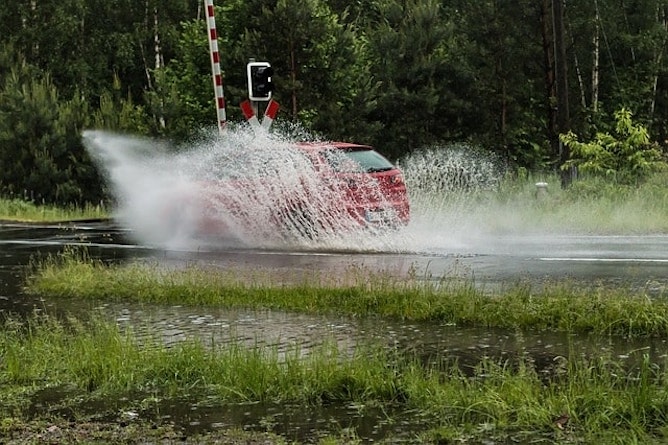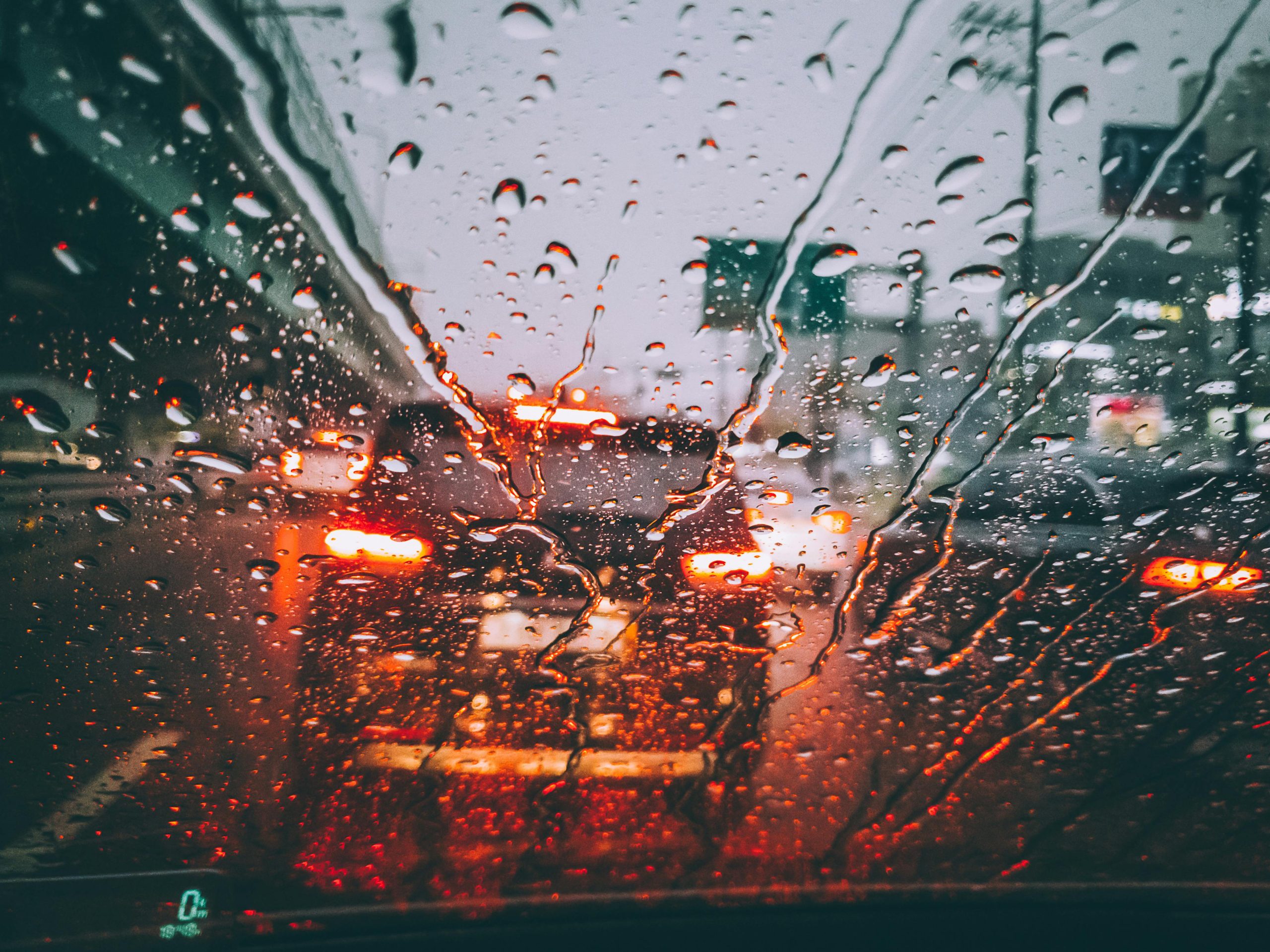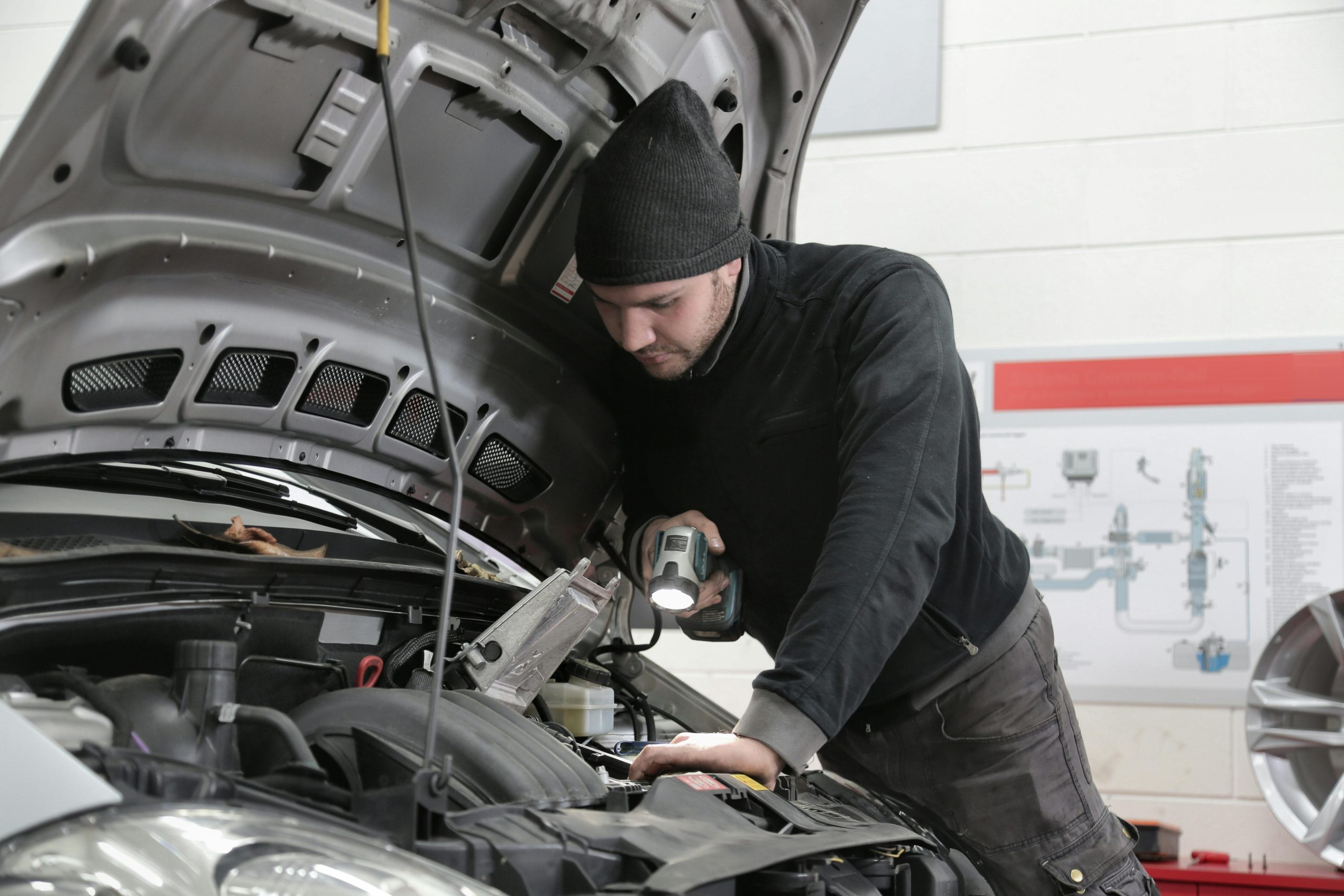Driving in floodwater can be very dangerous and poses a serious risk to both your safety and the maintenance of your car. Unfortunately, British weather means that driving in flood conditions is a challenge most UK drivers will face at some point, so it’s important to know how to do so safely and without causing damage to your car.
We’ve put together top tips for driving in floodwater. We’ll also discuss how floodwater can damage your car and what to do if you suspect water damage, such as booking a brake inspection.
How should you drive through floodwater?

Knowing how to drive on flooded roads is essential for yours and other road user’s safety, not to mention for avoiding a flood damaged car.
Here are our top tips on how to safely and sensibly manage driving in flooding conditions.
Drive slowly
First and foremost, it is extremely important that when you’re driving in floodwater, you drive slowly. The general rule of thumb is to drive at roughly 3-4mph.
Driving through water too fast can cause aquaplaning, which is when your tyres lose friction and grip, causing you to lose control of your steering. If you do feel this happening, do not slam the brakes on, but instead ease off the accelerator, holding your steering wheel firmly. This should allow you to restore control.
Find the shallowest part
It’s sensible to find the shallowest part of the road when driving into floodwater. Generally, roads are lower at the edges and rise in the centre, so stick to the middle of the road wherever possible.
Go one vehicle at a time

Drive one at a time and take turns driving through floodwater, both for people travelling in your direction and for cars coming the other way.
If you end up in a queue of cars, you’ll be sat still in water. This won’t be good for your car, and you may struggle to get it started again. Even worse, if a car ahead of you breaks down, you may end up having to reverse out of the floodwater. This can be very difficult, especially if you’re trying to reverse from a standstill.
Keep your revs up
Although you don’t want to speed through floodwater, you should still try to keep you revs up. This prevents stalling and stops water from entering the exhaust, which can cause damage to your engine.
Don’t stop
When driving through floodwater, you must keep moving to avoid car water damage. If you stop in floodwater, there’s more chance of water getting into your exhaust, causing internal damage or even making the engine seize up. Starting your car in floodwater can also be extremely difficult and you may find yourself stranded.
Check your brakes

Brake checking is one of the most important things to remember when driving in floods, as getting water in your brakes can pose an immediate and serious risk to your safety.
After you have driven out of the floodwater, you should always check your brakes, help dry them off and ensure they’re functioning properly. If you find that your brakes aren’t responding as they should be, pull over as soon as soon as it is safe to do so and call for assistance. Do not risk driving with faulty brakes.
If you’ve driven through deep floodwater but, after brake checking, your brakes seem fine, we still recommend getting your brakes checked for damage by a professional. ATS offer full brake inspections, which involve examining all key components of your brakes, including pads, discs and callipers, to ensure they’re roadworthy. We also offer free visual brake inspections, which let us advise you if your brakes need repairs or replacements.
If you suspect any kind of problems with your brakes, after driving in flood conditions or not, it’s always a good idea to get a professional brake inspection at your local ATS centre.
Don’t drive if it’s too deep
If you are at all unsure about how deep the water is, do not risk driving through it. If the water is too deep it can flood the exhaust, causing the engine to stop and break down.
The same goes for any kind of moving water; if you come across moving water, do not attempt to drive through it. Flowing water can be extremely dangerous and can quite easily wash a car away.
Driving electric cars in floods
If you’re driving an electric car in floodwater, you should follow the same guidelines you would when driving any other kind of car.
Most EVs are fitted with safety systems designed to shut down power in the event that they get flooded, so there’s no need to worry about your electric car catching fire. However, flood damaged electric cars can still suffer the same internal damage as their petrol and diesel counterparts.
Can floodwater damage your car engine or electrical car system?

Put simply, yes, floodwater can damage your engine and electrical system.
The most common way cars become flood damaged is by water getting in through the exhaust, which will usually cause your engine to seize. Floodwater damage can cause your car’s electrics to short circuit, which may cause permanent damage to the electrical system.
A little bit of water can go a long way and, once water is in your car, it can damage many different components, including:
– Fuel system
– Exhaust system
– Engine
– Suspension
– Braking system
If you find yourself in a situation where your car becomes flooded, stay inside the vehicle and call for assistance.
Driving in flood conditions can be extremely dangerous, so you should always take care and follow the necessary guidelines. Generally, it’s best to avoid driving in floodwater completely, so if you can easily reroute, or you’re unsure about the water depth, turning around will be your best option.
If you do drive through deep water, we recommend getting a brake inspection afterwards to ensure that the water hasn’t damaged your brakes.
